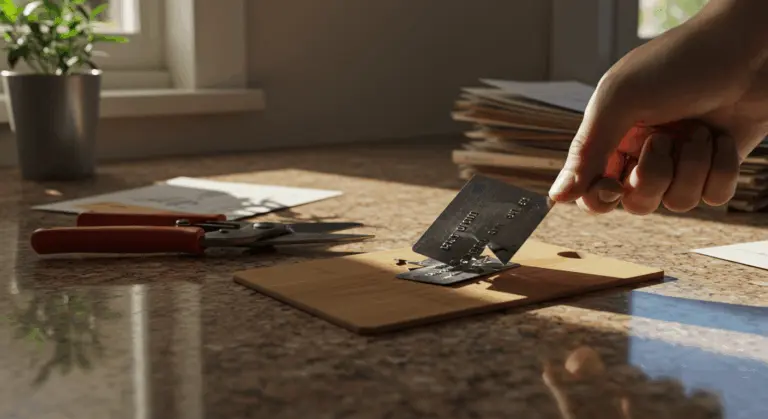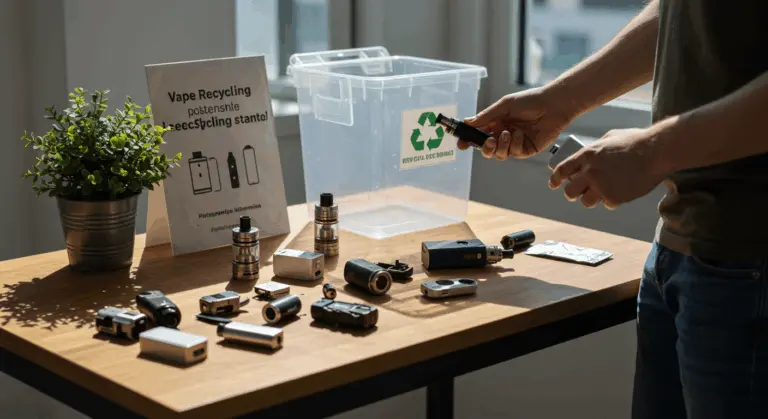Why Choose Professional Treadmill Removal Services?
Getting rid of an old treadmill isn’t as straightforward as simply dragging it to the curb. These machines weigh between 200 and 400 pounds, turning what appears to be a simple task into a potentially dangerous situation without the right equipment. Professional removal services offer clear advantages that make DIY attempts look risky in comparison.
Most importantly, professional services prioritize safety. These machines combine substantial weight with unwieldy dimensions—a recipe for disaster when attempting removal. Trained professionals have the proper equipment, techniques, and manpower to safely move these machines through doorways, downstairs, and out of your home without causing damage to your property or themselves.
Beyond safety concerns, professional removal services prevent fines for improper disposal. Municipal regulations governing large electronic equipment disposal can be surprisingly stringent, with improper disposal potentially triggering costly penalties. Removal experts understand local disposal regulations and ensure compliance, saving you from unexpected costs.
Environmental responsibility provides additional benefits. Reputable companies like Jiffy Junk and Load Up prioritize eco-friendly disposal methods, diverting treadmills from landfills whenever possible. They maintain partnerships with local charities for donations of working equipment and recycling facilities for proper disposal of components that can’t be reused. This responsible approach turns waste into reusable materials.
The convenience factor is equally attractive. Professional services handle the entire process from start to finish—including disassembly if necessary—sparing you the headache of wrestling with disassembly and transport logistics. Most companies offer flexible scheduling options, allowing you to book a removal time that works with your schedule. Some even provide same-day or next-day service for urgent removal needs.
Though professional removal does involve an upfront investment, companies like Load Up offer competitive pricing that’s often 20-30% less than other junk removal services. Factor in the time investment, physical strain, injury risk, and potential disposal fees of the DIY route, and professional removal often proves to be the better financial decision.
How to Find Free Treadmill Removal Services Near You
While finding free treadmill removal requires some research, several options can help you dispose of your equipment at no cost.
Begin your search with local charities and non-profit organizations. Many charitable organizations like Goodwill, The Salvation Army, and Habitat for Humanity Restores accept working fitness equipment donations. Most of these organizations provide complimentary pickup for bulky items—particularly when the equipment remains functional. When contacting them, be prepared to provide details about your treadmill’s condition, age, and model to determine if they’ll accept it.
Consider investigating manufacturer take-back programs. Some treadmill manufacturers offer recycling or removal services for their products, particularly when you’re purchasing a replacement. Companies like Nordic Track, Preform, and Sole sometimes provide this service as part of their customer care programs. Check the manufacturer’s website or contact their customer service department to inquire about available removal options.
Consider checking with local recycling centers and scrap metal facilities. Many of these operations will accept treadmills for free because they can recover valuable metals and components. Certain facilities extend pickup services for oversized items, though preliminary disassembly to separate metal from plastic components might be required.
Online community platforms connect you with local fitness enthusiasts looking for equipment. These platforms give new life to equipment that would otherwise sit unused. Popular options include:
-
Free cycle: A network dedicated to gifting items.
-
Facebook Marketplace: Use the “free” listing option to attract local interest.
-
Craigslist: Post in the “free” section for your area.
-
Next-door: A neighborhood-specific app for connecting with nearby residents.
Municipal bulk waste programs are worth checking into as well. Many cities and towns offer periodic free pickup days for large items. Check your local government website or call your waste management department to inquire about scheduled bulk pickup days or special collection events for electronic or exercise equipment.
If you prefer a more polished solution, consider using online booking platforms. While most professional removal services charge fees, occasional promotional campaigns offer complimentary pickup for select items or targeted geographic areas. You can typically book your treadmill removal and recycling online through their websites, making the process convenient and straightforward.
Be aware that even ‘free’ services may include hidden costs. Services advertising free removal might tack on charges for stair navigation, excessive distance, or equipment weight. Always confirm all terms before scheduling a pickup to avoid unexpected expenses.
Eco-Friendly Treadmill Disposal Options
As you prepare to bid farewell to your treadmill, choosing an environmentally friendly disposal method keeps your equipment out of already overflowing landfills. Multiple environmentally responsible options can give your treadmill a second life or ensure its materials are properly recycled.
Load Up demonstrates this environmentally conscious approach, channeling functional treadmills toward donation while routing defunct units to recycling facilities. They offer flexible pickup options, including in-home service or curbside pickup.
Jiffy Junk takes a similar approach, beginning with thorough equipment assessment. Working units are donated to local charities, whereas broken units undergo meticulous disassembly, ensuring hazardous components never reach landfills.
Their specialized approach ensures each component is handled correctly:
-
Electronics: Processed according to e-waste regulations.
-
Metals: Sent to recycling facilities to be recovered.
-
Refurbishable Parts: Salvaged for reuse whenever possible.
Those looking for convenience will find that these eco-friendly removal services typically handle everything from disassembly (though this may incur additional fees) to transportation. Many offer online booking systems that allow you to schedule pickup at your convenience, making environmentally responsible disposal surprisingly easy.
Cost Factors for Treadmill Removal Services
Understanding the cost factors helps you budget effectively and avoid unexpected charges. The average starting price for professional treadmill removal services is around $150, since specialized providers typically undercut general junk removal companies by 20-30%.
Several key factors influence the final price:
-
Size and Weight: Heavier, commercial-grade models cost more to remove than compact ones.
-
Location: The price depends on both your region and the treadmill’s placement in your home (e.g., a basement vs. a ground-floor room).
-
Condition: Functional treadmills that can be donated may qualify for a discount, while non-working units requiring disassembly may cost more.
-
Accessibility: Difficult access, such as narrow hallways or multiple flights of stairs, increases labor costs.
-
Pickup Type: Curbside pickup is often cheaper than full-service in-home removal.
For the most precise estimate, be prepared to provide detailed information about your treadmill when contacting removal services. Specifics about the model, approximate weight, current location in your home, and condition will help companies provide a precise estimate. Most services provide complimentary quotes, allowing you to compare options before deciding. Some companies even provide online calculators where you can input these details for an instant estimate, making the budgeting process straightforward and transparent.
Treadmill Donation: Where to Donate Your Equipment
Should your treadmill remain in solid working order, donation becomes an excellent option that serves both community needs and environmental stewardship. Several organizations specifically accept fitness equipment donations and ensure they reach people who can put them to good use.
Fitness 4 Charity stands out with its specialized focus—accepting exercise equipment donations and strategically redistributing them to underserved individuals and communities. This targeted approach means your equipment directly supports health and wellness initiatives for those who might otherwise lack access to fitness resources.
Numerous thrift stores embrace treadmill donations, contingent on functional condition. The Salvation Army is particularly well-known for accepting fitness equipment donations at many of their locations. It’s wise to call ahead to verify acceptance of your specific model and coordinate drop-off logistics.
When donation isn’t viable, consider contacting a scrap metal recycling center. These facilities often accept metal components and other parts of exercise equipment, ensuring that valuable materials don’t end up in landfills. This option works well for broken treadmills that contain valuable recyclable materials.
Certain removal services, Jiffy Junk among them, integrate donation pickup into their comprehensive removal packages. If your equipment is in good condition, these companies will partner with community organizations to ensure your treadmill finds a new home. This combines professional convenience with the satisfaction of knowing that your equipment will serve others.
Upon donation, organizations conduct condition assessments. Working units are typically passed on to charities, while non-functional ones are sent to recycling facilities to recover materials.
Selling Your Old Treadmill: A Viable Option?
Should your treadmill retain its functionality, self-directed selling may be more profitable than free removal options. This option allows you to recoup some of your initial investment while ensuring your equipment finds a new home with someone who will use it.
Digital marketplaces have revolutionized used fitness equipment sales. Effective platforms include:
-
Facebook Marketplace: Ideal for local sales to avoid shipping.
-
Craigslist: Another popular option for connecting with local buyers.
-
eBay: Reaches a wider audience but may require arranging shipping.
Setting the right price requires honest assessment of your treadmill’s current market value. Research similar models online and consider factors such as age, brand reputation, features, and overall condition. Expect used treadmills to command 40-60% of original retail value, contingent on these variables. A treadmill that’s only a few years old with advanced features will naturally command a higher price than an older, basic model.
Getting the best sale price depends on excellent presentation. Invest time in comprehensive cleaning—remove dust, dirt, and visible wear wherever possible. Photograph your treadmill from multiple angles in good lighting, clearly showing the console, running surface, and any special features. Include close-ups of the model number and any minor cosmetic issues to set appropriate expectations.
Comprehensive documentation significantly enhances buyer appeal. Include the original manual, maintenance records, and any warranty information if it’s transferable. Original accessories—safety keys, heart rate monitors, specialized lubricants—can substantially boost interest while justifying premium pricing.
Craft listings that balance honest condition disclosure with compelling feature highlights. Mention the original purchase price, how frequently it was used, any maintenance performed, and why you’re selling. This honesty builds buyer confidence and reduces potential problems after the sale.
If your treadmill is outdated, has mechanical issues, or lacks buyer interest, selling may require more effort than it’s worth. In these cases, the donation or removal services discussed in previous sections likely represent more practical solutions. Bear in mind: broken equipment rarely commands meaningful resale value except among parts scavengers or repair enthusiasts.
Frequently Asked Questions About Treadmill Removal
People considering treadmill removal usually have similar questions. Here are answers to the most common inquiries to help you understand what to expect:
How quickly can I schedule a treadmill pickup?
Typical turnaround spans just a few days. Many companies offer online scheduling, often with same-week availability.
Do I need to move the treadmill to the curb myself?
Absolutely not—professional services manage end-to-end extraction from your home’s interior.
What happens to my treadmill after it’s removed?
What happens to your treadmill depends on its condition and your service provider’s practices. Many companies prioritize environmentally responsible disposal methods. Treadmills in good working condition are often donated to charities or community organizations. Irreparable units undergo systematic disassembly—metals and electronics channeled to recycling facilities, significantly reducing landfill waste.
Is disassembly included in the removal service?
Standard disassembly typically comes included, though complex configurations or cramped spaces may trigger additional charges. It’s best to clarify this when booking.
How much should I expect to pay?
Expect baseline pricing around $150, though final costs fluctuate based on location, equipment specifications, accessibility challenges, and supplementary service requirements. Good companies provide clear, upfront pricing—many even undercutting general junk removal competitors.
Do I need to be home during the pickup?
Though policies differ across providers, most require your presence to facilitate access and confirm service completion. Some companies offer flexible scheduling with specific time windows to minimize disruption to your day.
Can other exercise equipment be removed at the same time?
Absolutely—most providers welcome additional fitness equipment. If you’re clearing out multiple pieces (like ellipticals, stationary bikes, or weight benches), mention this when scheduling your pickup. Removing multiple pieces together often results in better pricing.




